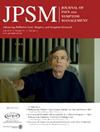Un Milagro de Dios: Navigating Latino Patients & Families’ Hopes/Prayers for Miracles
IF 3.2
2区 医学
Q2 CLINICAL NEUROLOGY
引用次数: 0
Outcomes
1. Describe the importance of spirituality and miracle literacy in a Latino and spiritually diverse clinical context.
2. Review tools that assist palliative care clinicians and other clinicians explore and respond sensitively to Latino patient and/or family's expression of hoping for a miracle.
Key Message
Recognizing the spirituality and religious beliefs of Latino patients living with serious illness who express hope for a miracle along with developing tools to best address these beliefs, is an opportunity for the interdisciplinary team to connect with the needs of patients and families, decrease suffering and promote healing.
Abstract
The Latino population accounted for 52% of U.S. population growth over the last decade (1). Latino patients frequently cite religion and la Espiritualidad, which serves as a source of strength and coping and influences how others understand them and the world around them (2). It encompasses their values, morals, behaviors, feelings, interpretation of events, and views of illness and death, impacting complex medical decision-making (3-5). Differences in religious/spiritual beliefs around death and dying, have been reported by clinician to be a barrier when communicating with patients (6). When facing serious illness, patients and families may express hope for a miracle, or un Milagro. This expression may be perceived as being “in denial” about one's illness severity (7). Palliative care clinicians are often called to support patients and families who express hope for a miracle (5). They should be equipped with tools to provide culturally-spiritually sensitive care, including the ability to respond to these expressions of beliefs, assess the diverse spiritual needs of patients/families and lastly understand the nuances and diversity of the Spanish language.
Objectives
An interdisciplinary team (physician, nurse, chaplain, social worker) representing multiple institutions will discuss practical strategies for exploring what seriously ill Latino patients and families mean by a hope for a miracle, strategies on repairing missteps that negatively impact trust, and sample language for aligning with their spirituality & bridging perspectives for all involved (patients, families, and clinicians).
Conclusion
As the U.S. Latino population continues growing and aging, there is a need for palliative care clinicians to better equip themselves on how to effectively support this population who express hope for a miracle. Though we examine this through the lens of Latino patients, lessons learned can be applied to patients and families from other cultures expressing hope for a miracle.
References
1. Krogstad JM, Passel JS, Noe-Bustamante, L. Key facts about U.S. Latinos for National Hispanic Heritage Month. https://www.pewresearch.org/fact-tank/2022/09/23/key-facts-about-u-s-latinos-for-national-hispanic-heritage-month/. Accessed August 7, 2024. 2. Delgado-Guay MO, Palma A, Duarte E, et al. Association between Spirituality, Religiosity, Spiritual Pain, Symptom Distress, and Quality of Life among Latin American Patients with Advanced Cancer: A Multicenter Study. J Palliat Med. 2021;24(11):1606-1615. 3. Vallurupalli M, Lauderdale K, Balboni MJ, et al. The role of spirituality and religious coping in the quality of life of patients with advanced cancer receiving palliative radiation therapy. J Support Oncol. 2012;10(2):81-7. 4. Cain CL, Surbone A, Elk R, et al. Culture and Palliative Care: Preferences, Communication, Meaning, and Mutual Decision Making. J Pain Symptom Manage. 2018;55(5):1408-1419. 5. Shinall MC Jr, Stahl D, Bibler TM. Addressing a Patient's Hope for a Miracle. J Pain Symptom Manage. 2018;55(2):535-539. 6. Periyakoil VS, Neri E, Kraemer H. No Easy Talk: A Mixed Methods Study of Doctor Reported Barriers to Conducting Effective End-of-Life Conversations with Diverse Patients. PLoS One. 2015;10(4):e0122321. 7. Sinclair S, Chambers B, Davila C. The Invisible Millions: Caring for Latino Patients and Families during COVID-19. https://www.capc.org/blog/the-invisible-millions-caring-for-latino-patients-and-families-during-covid-19/. Accessed Aug 7, 2024.
求助全文
约1分钟内获得全文
求助全文
来源期刊
CiteScore
8.90
自引率
6.40%
发文量
821
审稿时长
26 days
期刊介绍:
The Journal of Pain and Symptom Management is an internationally respected, peer-reviewed journal and serves an interdisciplinary audience of professionals by providing a forum for the publication of the latest clinical research and best practices related to the relief of illness burden among patients afflicted with serious or life-threatening illness.

 求助内容:
求助内容: 应助结果提醒方式:
应助结果提醒方式:


